Nova Scotia Part 1
Being of Scottish descent, I’ve always wanted to visit Scotland but I doubt I’ll ever get there so I figured Nova Scotia was the next best thing. And I was right.
I spent three days on the road, staying overnight at Walmarts and traveling from Quebec through New Brunswick and the mainland of Nova Scotia to get to Cape Breton. Cape Breton is the northern portion of the province and the northern-most portion of that is where I spent most of my time.

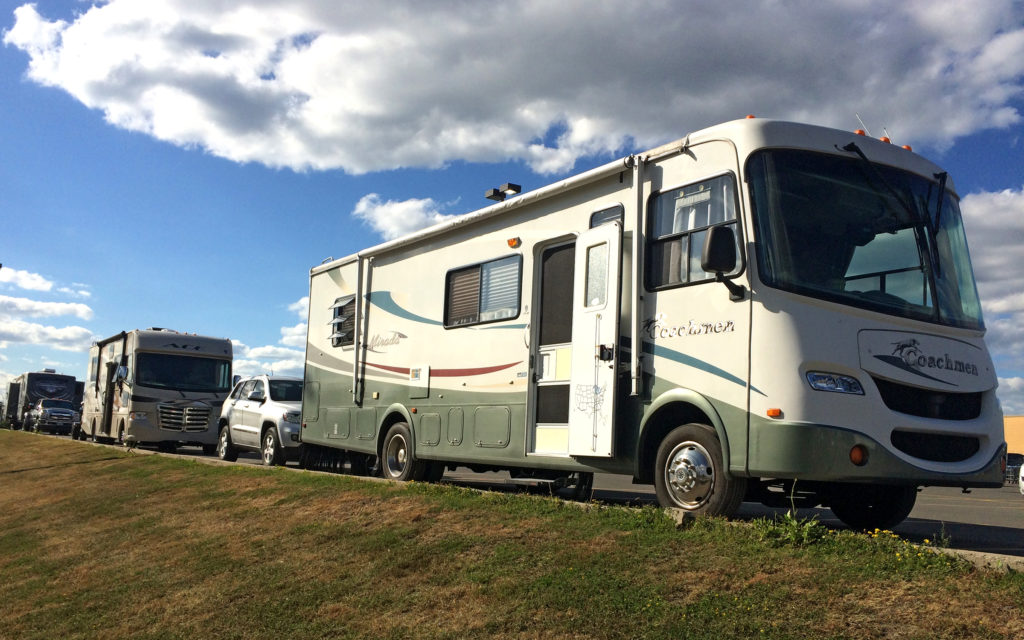
Many Walmart stores allow RVs to park overnight on the outskirts of their lots.
The eastern side of the cape that borders the Atlantic Ocean, is very Scottish, with road signs in Gaelic. Towns and streets have Scottish names and the people speak with a delightful blend of a Scottish brogue and a Canadian accent… Eh. The western side, on the Gulf of St. Lawrence, is French.
The entire cape has a very small population and towns are scattered far apart, much like I found on the Quebec’s Gaspé Peninsula. What it has is spades is breathtaking views of the rocky coastline and ocean.

The coastline of Cape Breton, Nova Scotia.
I had wanted to stay in one of the three campgrounds within Cape Breton Highlands National Park (Anything with “highlands” in the name gets my attention.) but they were all booked for the entire season. This happens with our national parks in the U.S., as well. They also tend to have little in the way of facilities for RVs like electric, water, and sewer hookups. Things I need when staying more than a couple days.
I had made a reservation at a private campground in the southern part of the cape, which proved to be convenient for exploring areas to the south like Sydney. I spent 15 days at Joyful Journeys Campground in Jersey Cove and by the time my stay was up, I’d made several friends there and didn’t want to leave.
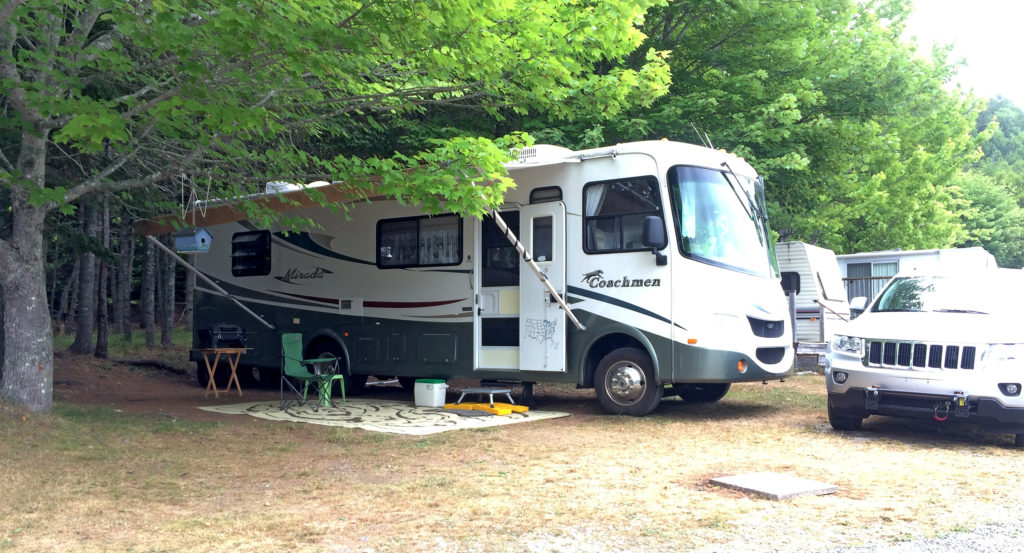
My camp site at Joyful Journeys Campground.
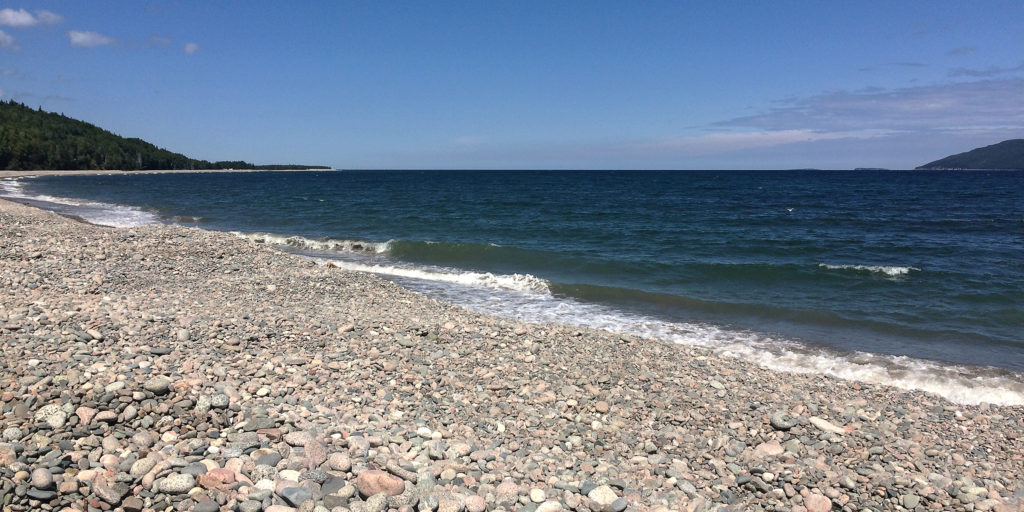
Rocky beach at the campground.
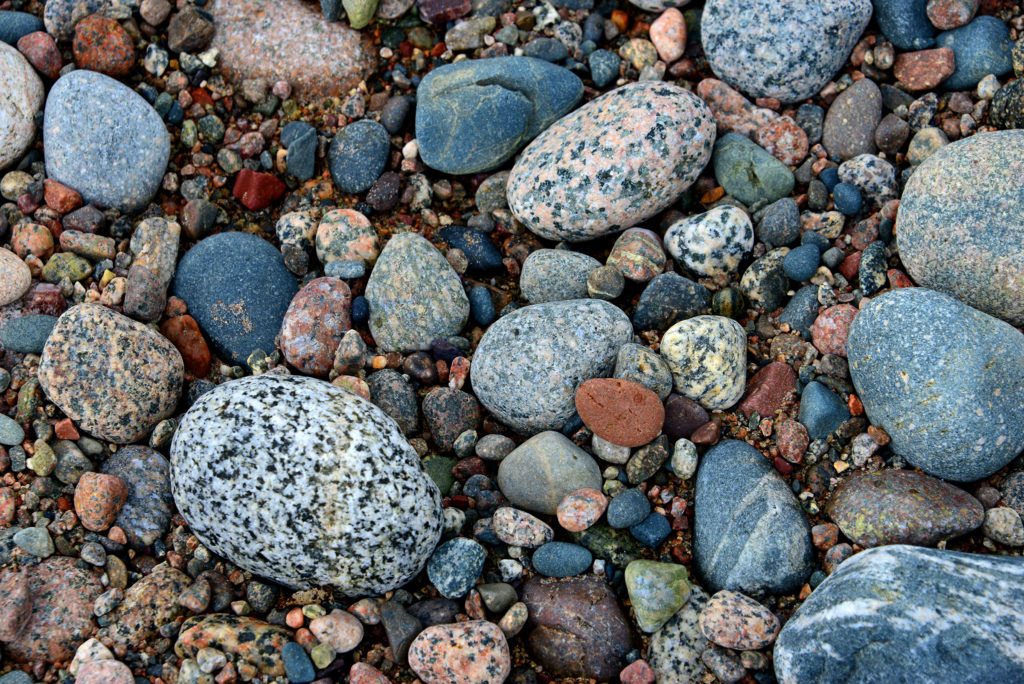
Amazing variety of rocks on the beach.
When I first arrived, I met Kenney and Donny, two retired men who work at the campground doing handyman work. Their seasonal sites were directly across from the site I was given and they assisted in getting me backed in. Kenney even climbed up on my roof to trip low branches. They had just cleared this particular site for Kenney to move into but now he’d have to wait for me to leave. We joked a lot over the two weeks about how he was throwing me out soon.
Kenney and I also had a conversation about proper name spelling. He made a point of telling me he was Kenney with an “e” and that without the “e” is a last name. I have the same thing with my name. Lindsay with an “a” is a last name and with an “e” is a male first name. My first name was once a last name in my family, a Scottish clan name. In 1812, one of my female ancestors, Mattie T. Lindsay married and, as was the style of the day, she took her maiden name as her middle name. For many generations after, we’ve had females named Mattie Lindsay… I was the first to have the name as my first name.
Besides Kenney and Donny, I also made friends with some guys working on local road construction. They live a couple hours away so their employer puts them up in rental trailers at the campground on weekdays. Jerry was staying next to me and the other guys (Anthony and Carman) would come over there for a few beers after work.
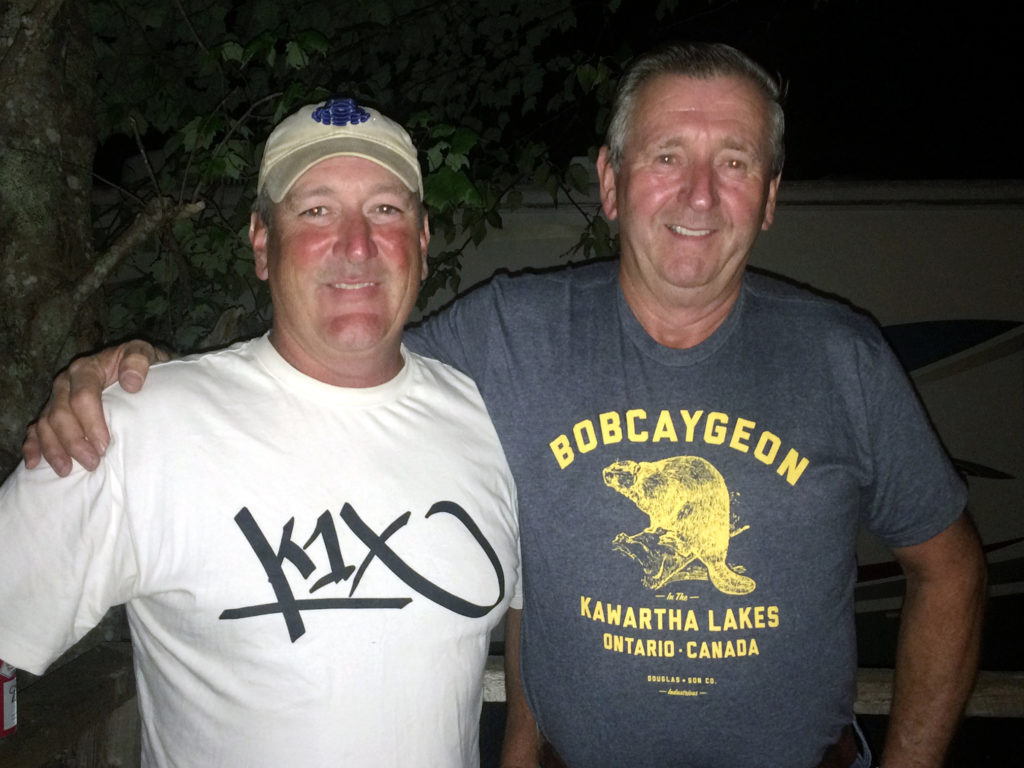
Jerry (L) and Carman (R) work on a road construction project near the campground.
I was fascinated with the fact that Jerry was the explosives guy on the crew. He set and blasted the dynamite to remove rock for widening the road. Every day, I’d ask if he’d blown anything up today. I had never met anyone whose job it was to blow stuff up. How cool is that?!
I love it when I can have an experience that other tourists don’t have so I was really excited when Jerry arranged for me to come to the work site and photograph an explosion. I spent several hours riding around in a giant rock-hauling truck with Carman and when the blast was set, I was able to set up my cameras to shoot both video and stills. I set up as close as they would allow me for safety reasons but wish I could have gotten closer. Regardless, it was an awesome experience and I thank my Nova Scotian friends for adding some wonderful memories to my visit.
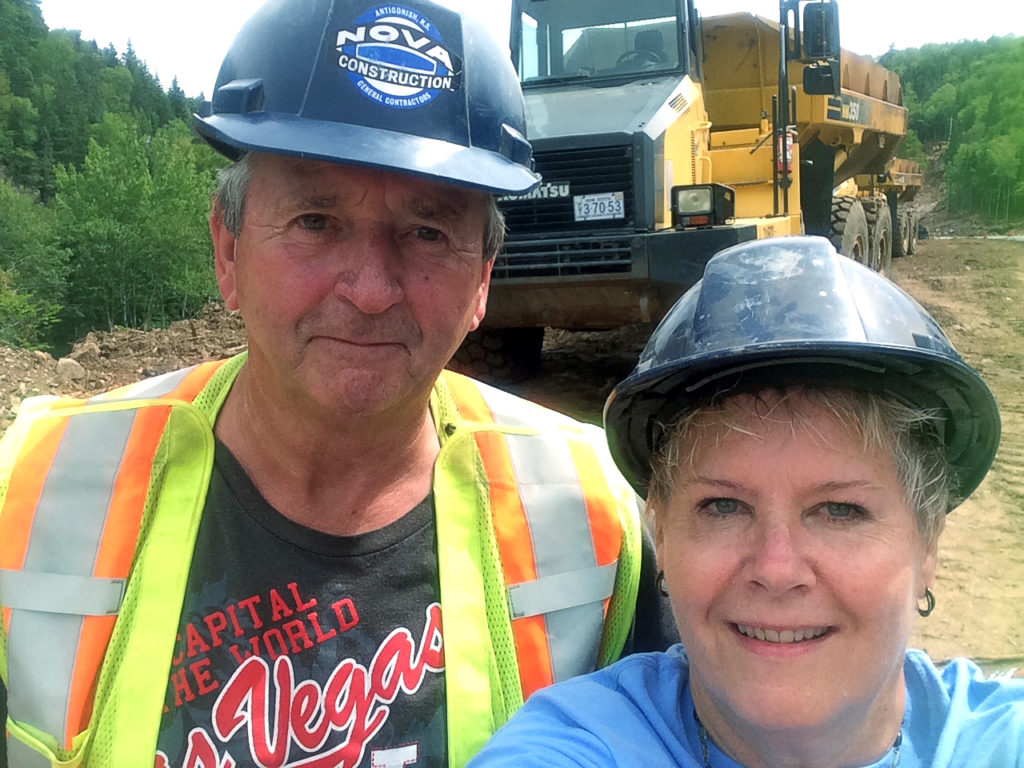

Carman was my chauffeur, escorting me in his rock hauler.
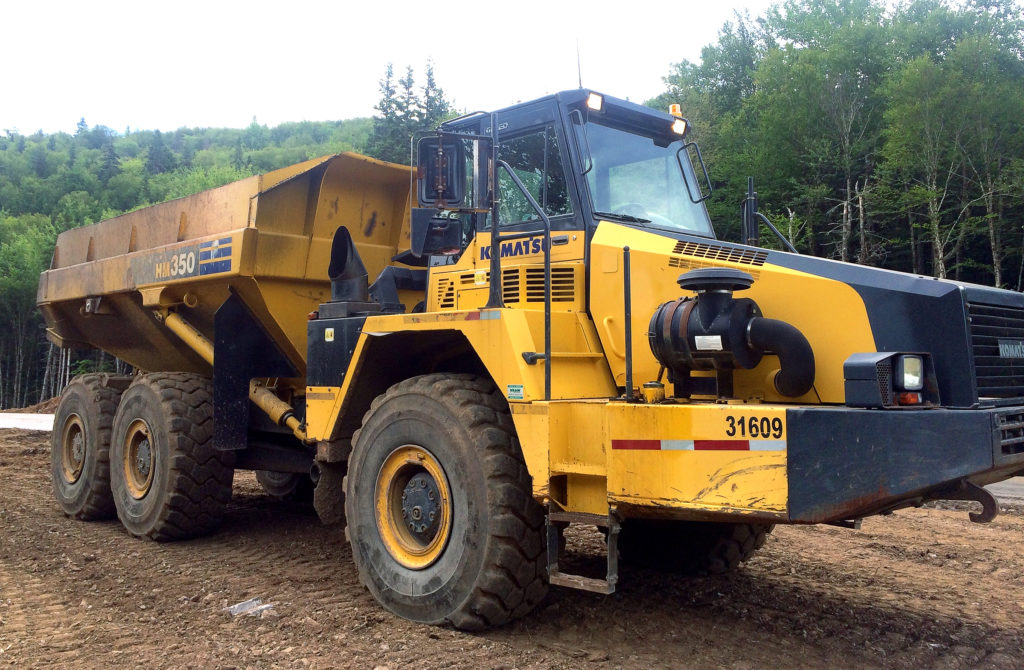
What a sweet ride!
One of Cape Breton’s best assets is the Cabot Trail, a scenic road that completely circles the upper cape. Its greatest feature is the abundance of spectacular views of the coastline but it also runs through parts of the national park and forest. There is access to many hiking trails, picnic areas and beaches. I hiked to several waterfalls that are located just off the Cabot Trail and I even managed to find a couple lighthouses.
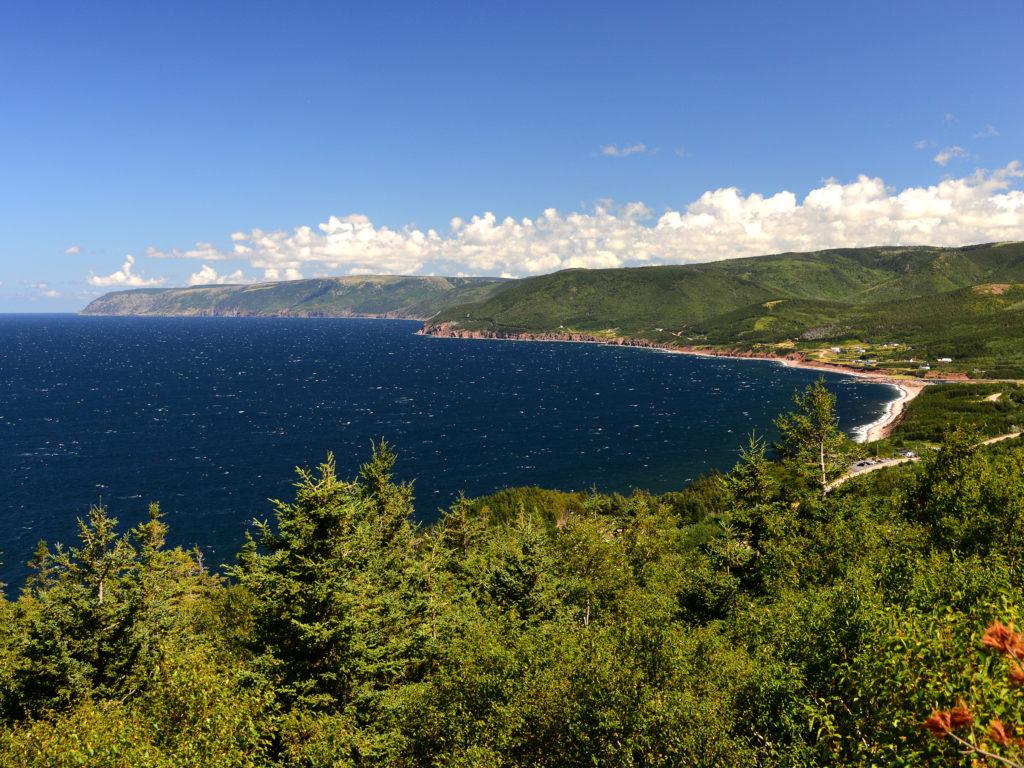
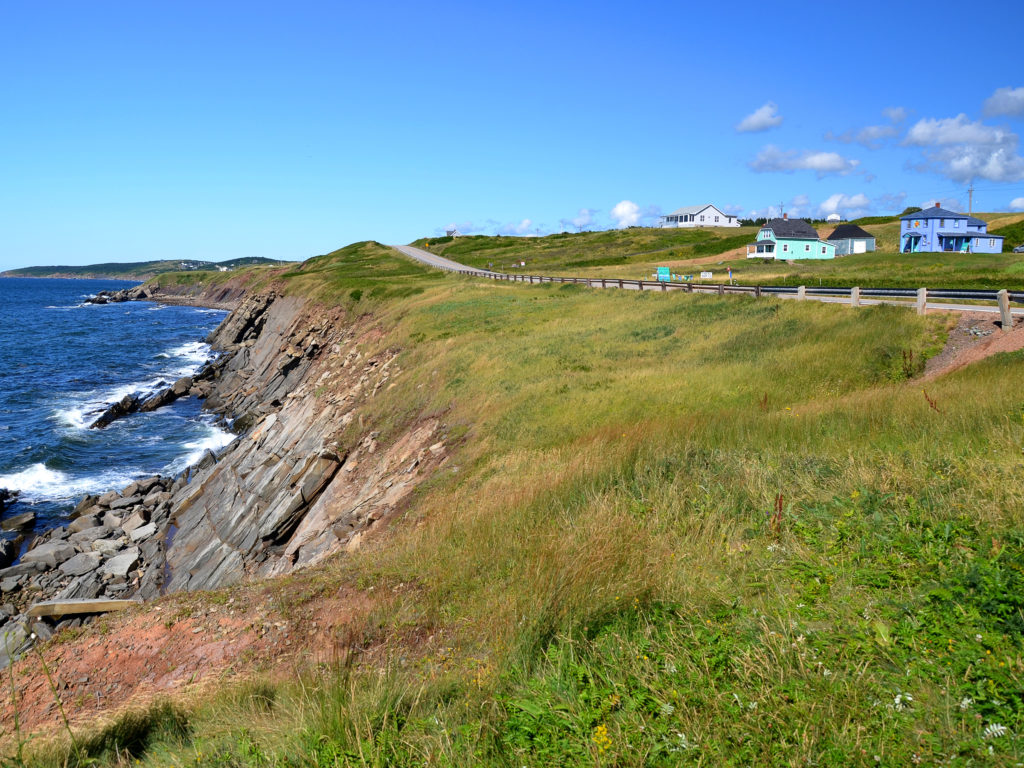
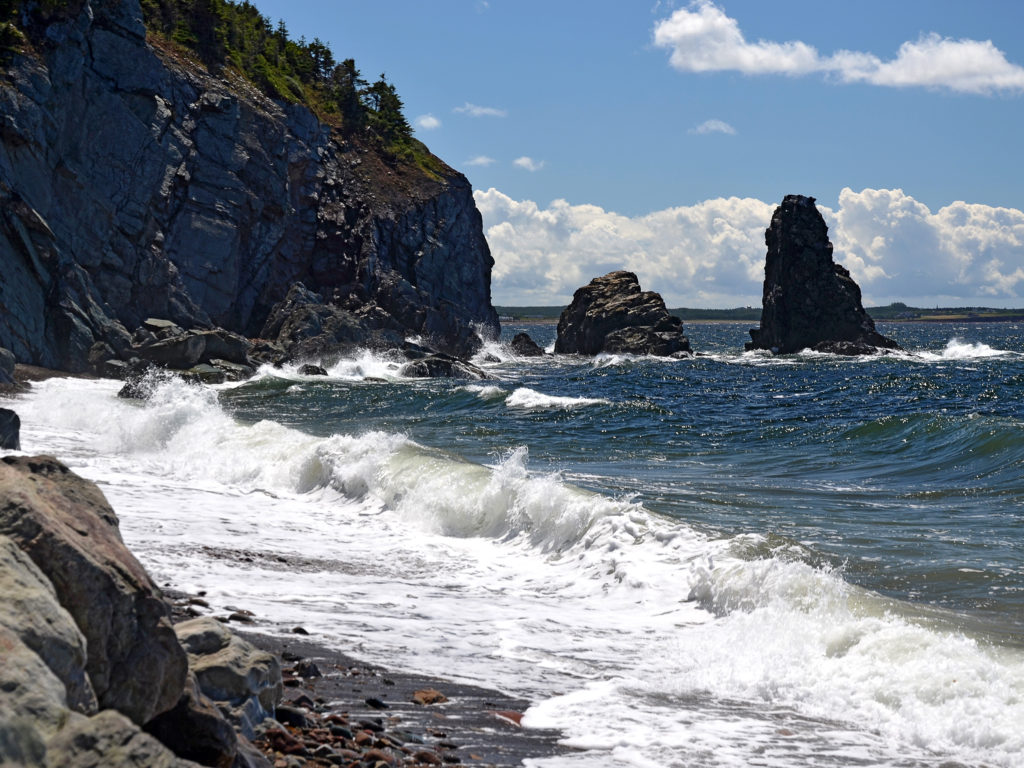
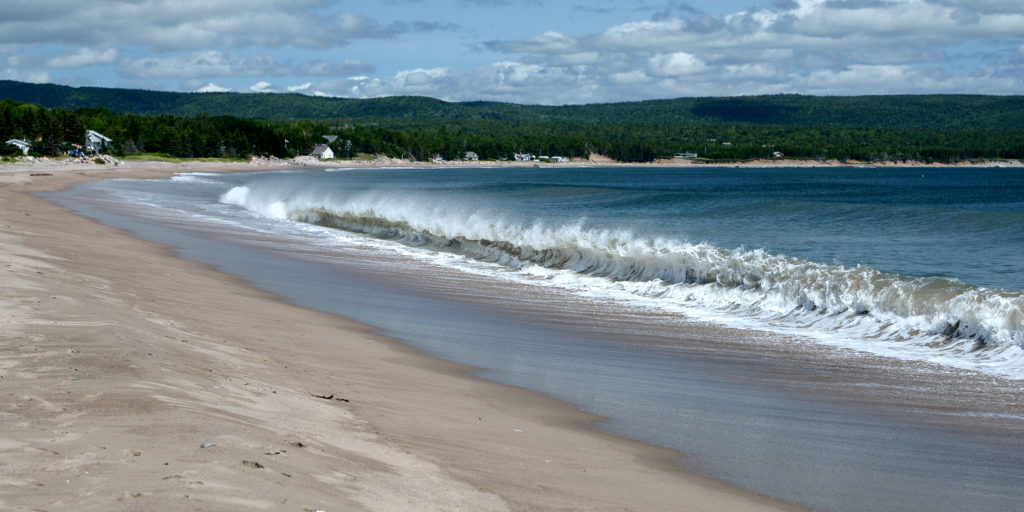
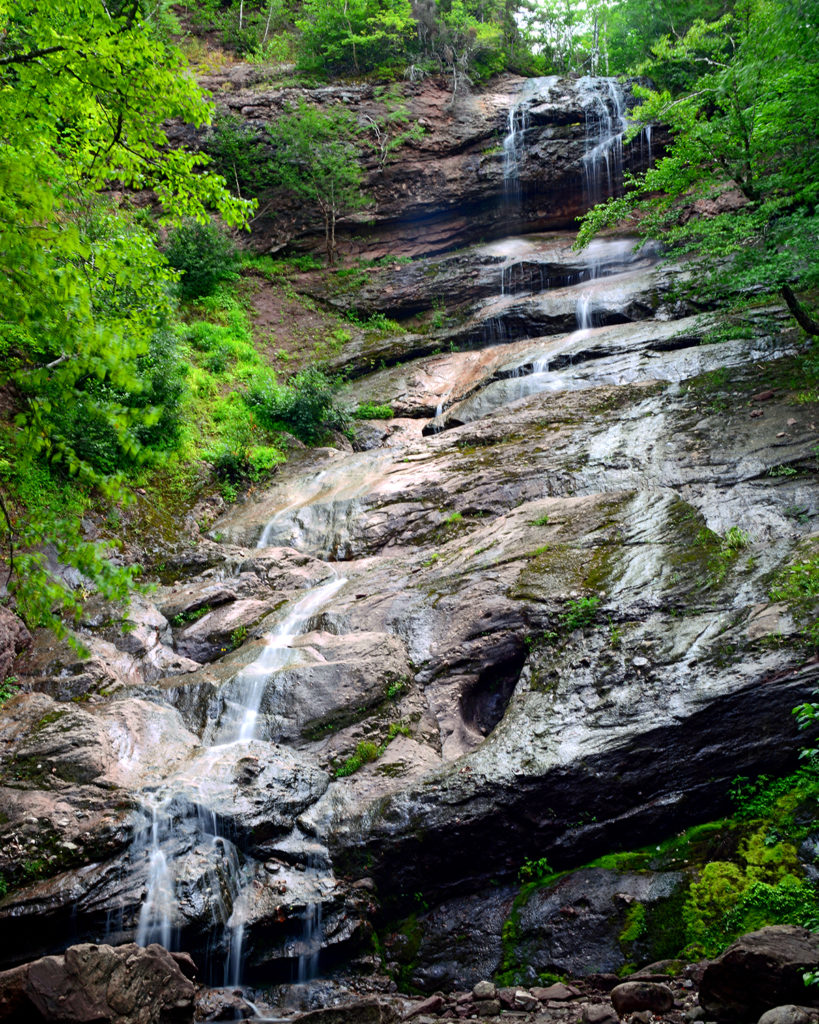
Beulach Ban Falls
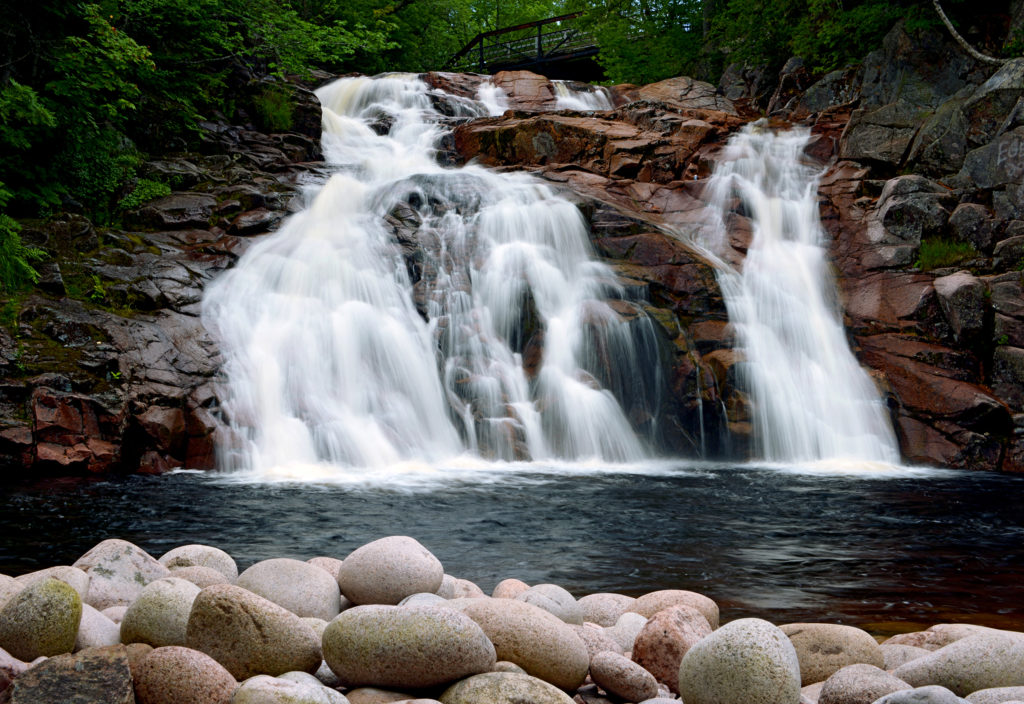
Mary Ann Falls
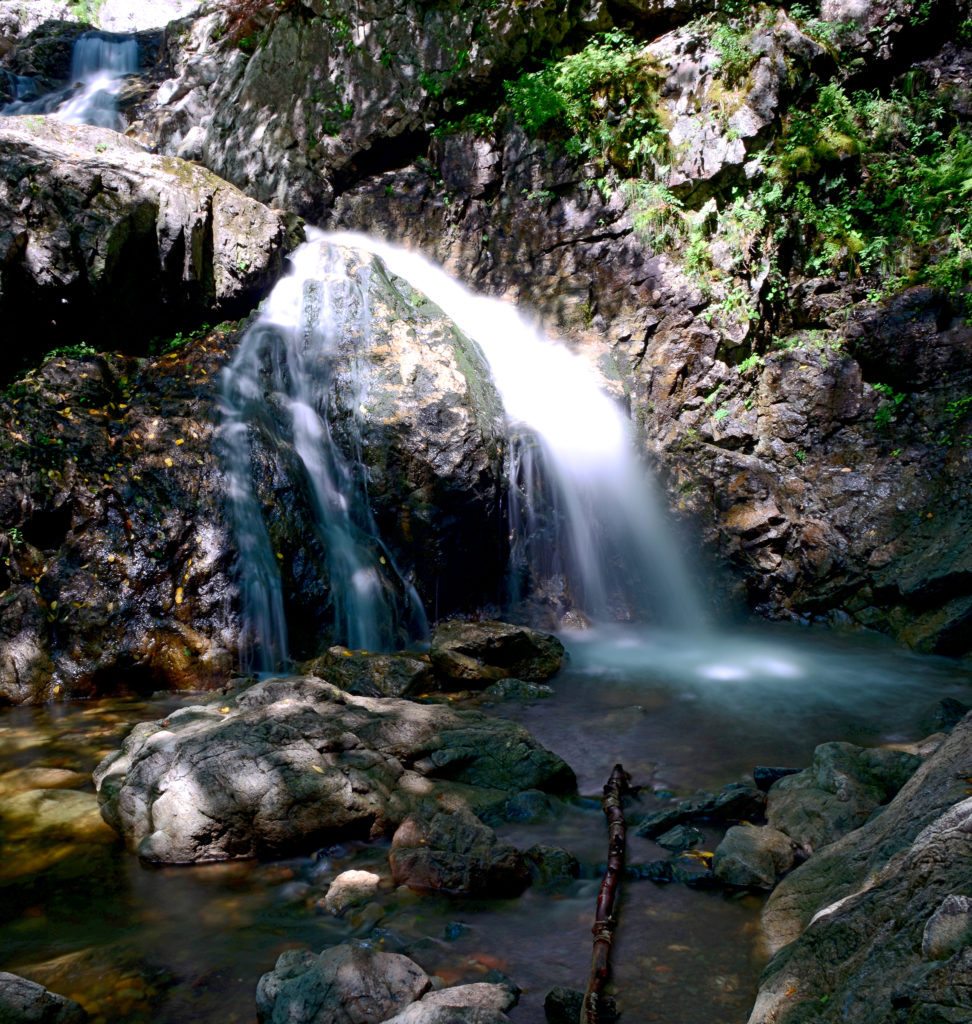
Uisge Ban Falls (ish-ka-ban)
I took several Cabot Trail drives up the east side of the cape, visiting locations that were within a couple hours of my campground. I took one day to drive the entire loop that is 185 miles. It took me 8 hours with a few stops along the way and lunch on the French side.
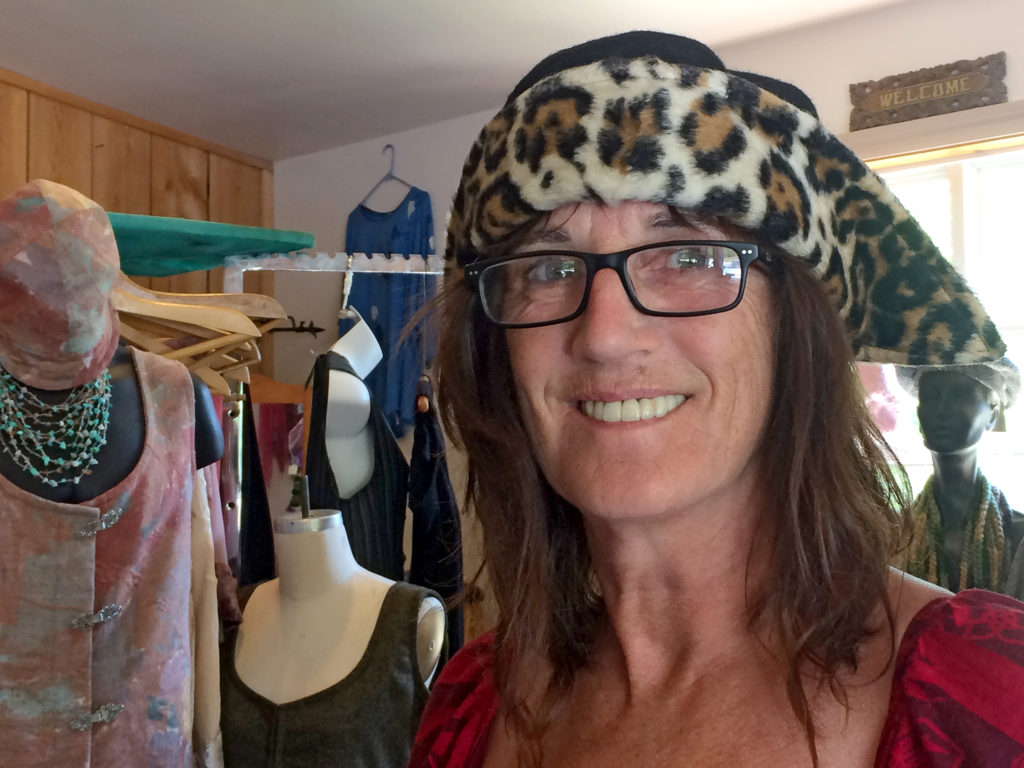
Barbara Longva ia a seamstress and milliner extraordinaire. I visited her unique little shop, Sew Inclined, in Ingonish. She makes period clothing and funky hats. Being a seamstress myself, we had a lot in common.
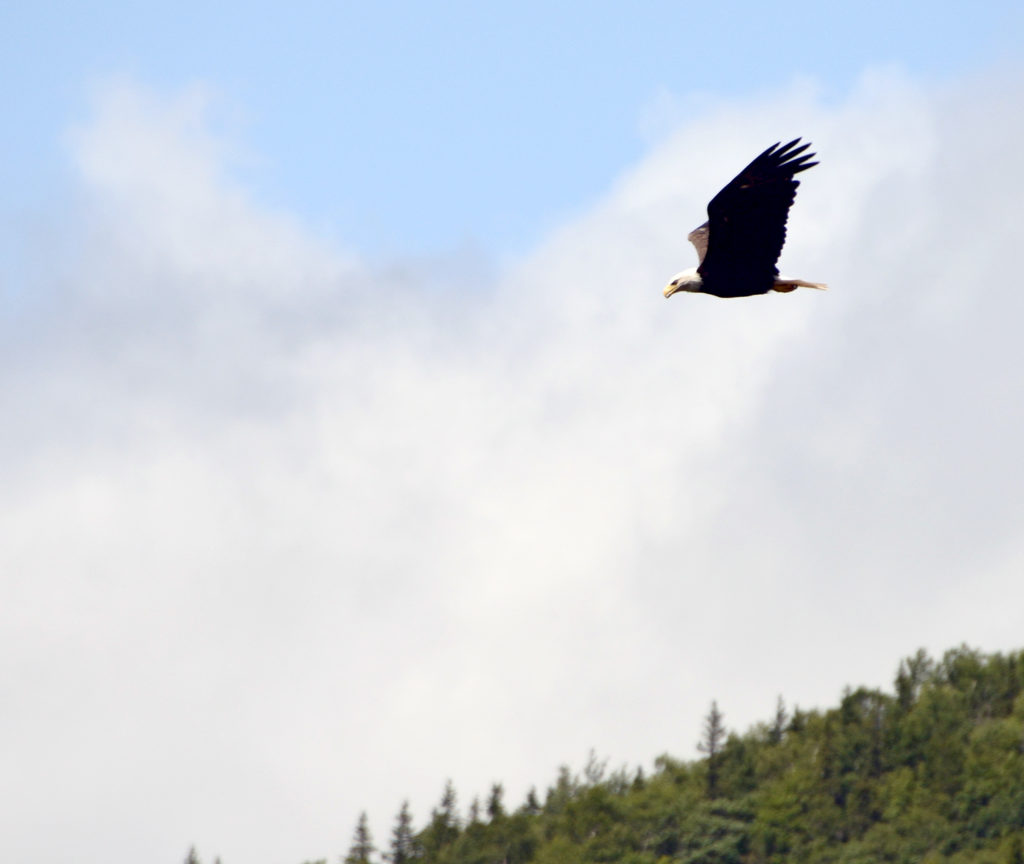
I saw several eagles while driving the Cabot Trail.
I was really surprised by the lack of boats here. There’s water everywhere but hardly any pleasure crafts and few commercial fishing boats, for that matter. What I gathered from talking to locals, it’s likely due to the low population and their low incomes.
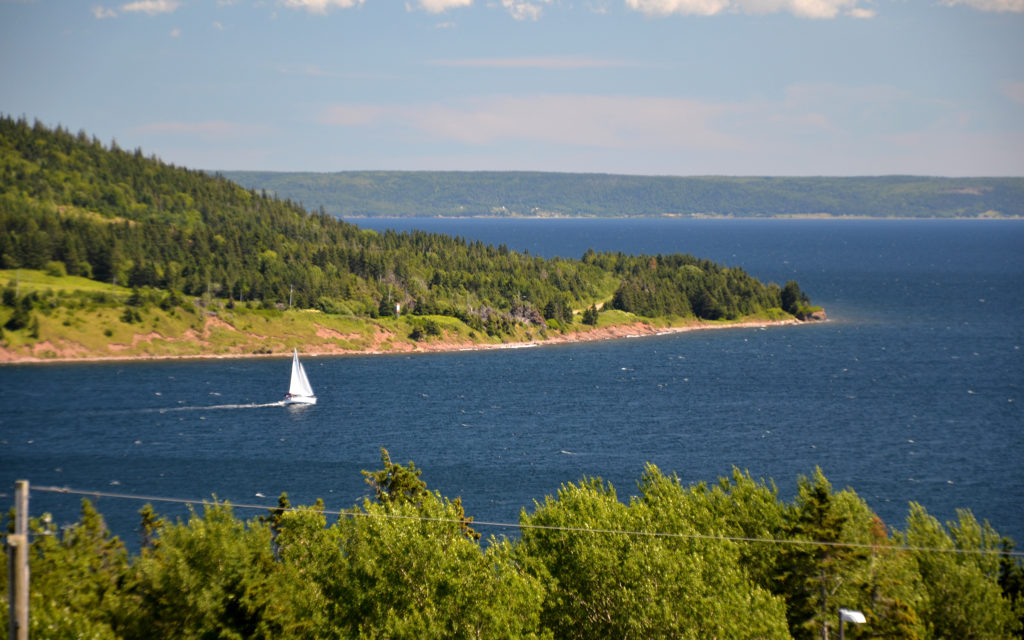
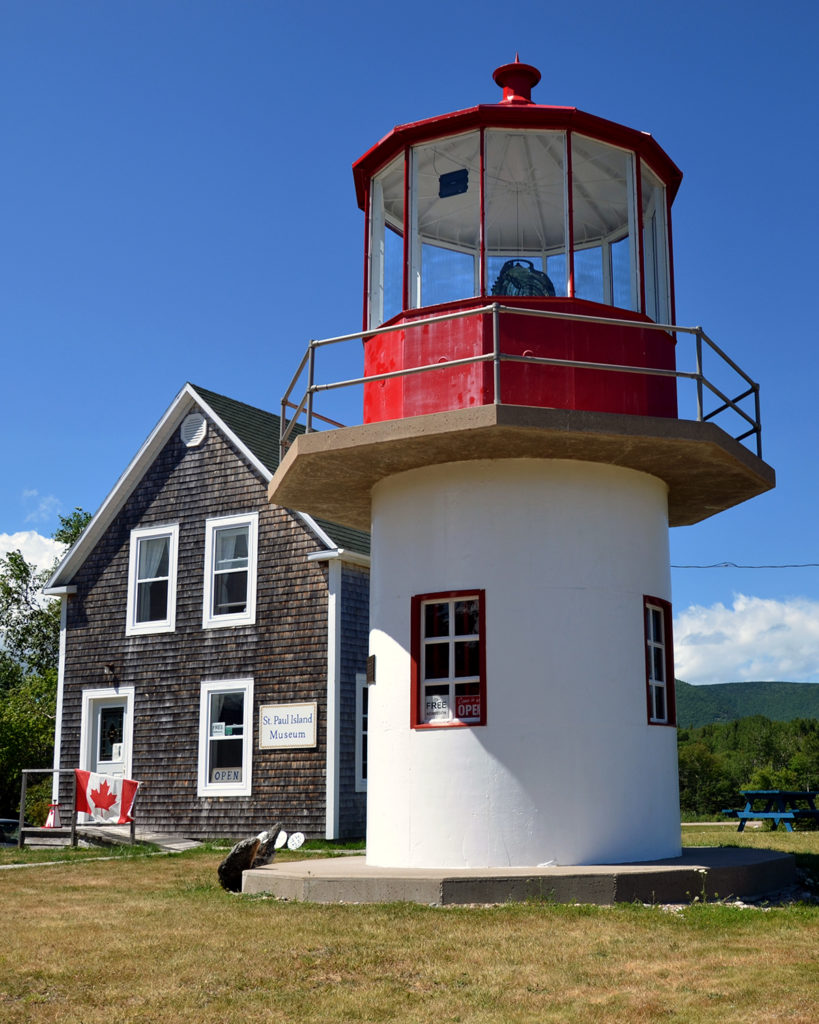
St. Paul Lighthouse was originally located on an island but when no longer needed as a navigational aid, it was slated to be destroyed but was saved and moved to the mainland and turned into a museum.
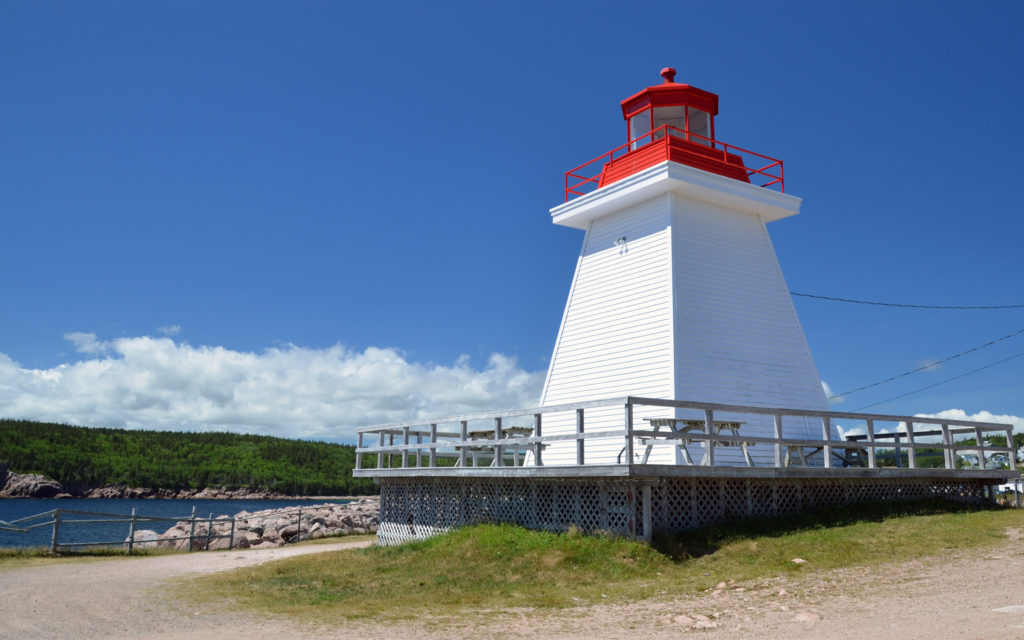
Neil’s Harbour Lighthouse is now an ice cream parlor.
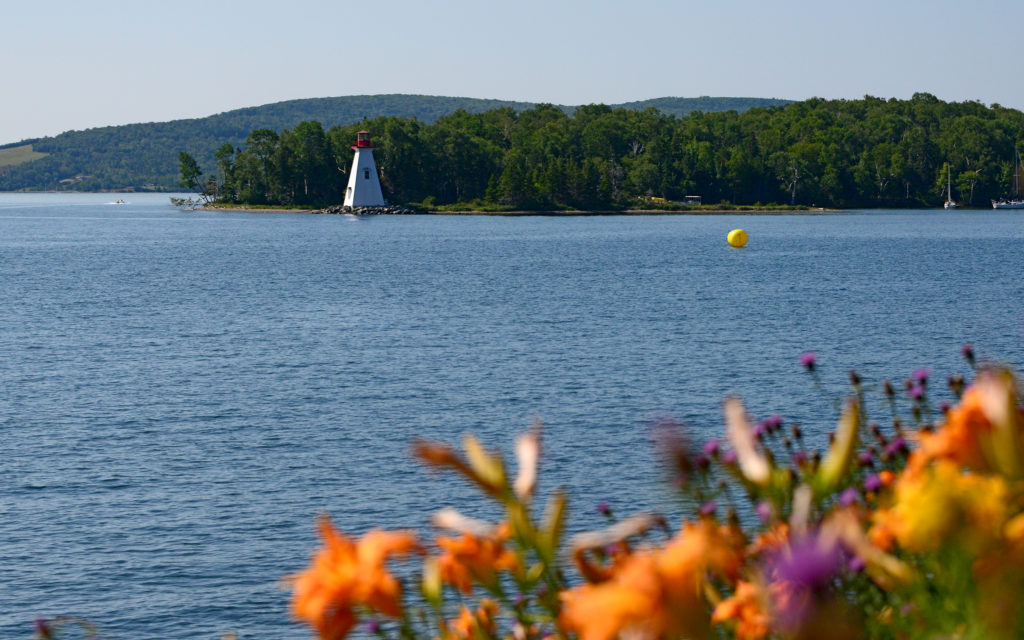
Kidston Island Lighthouse is on an island in Baddeck and accessible only by boat.
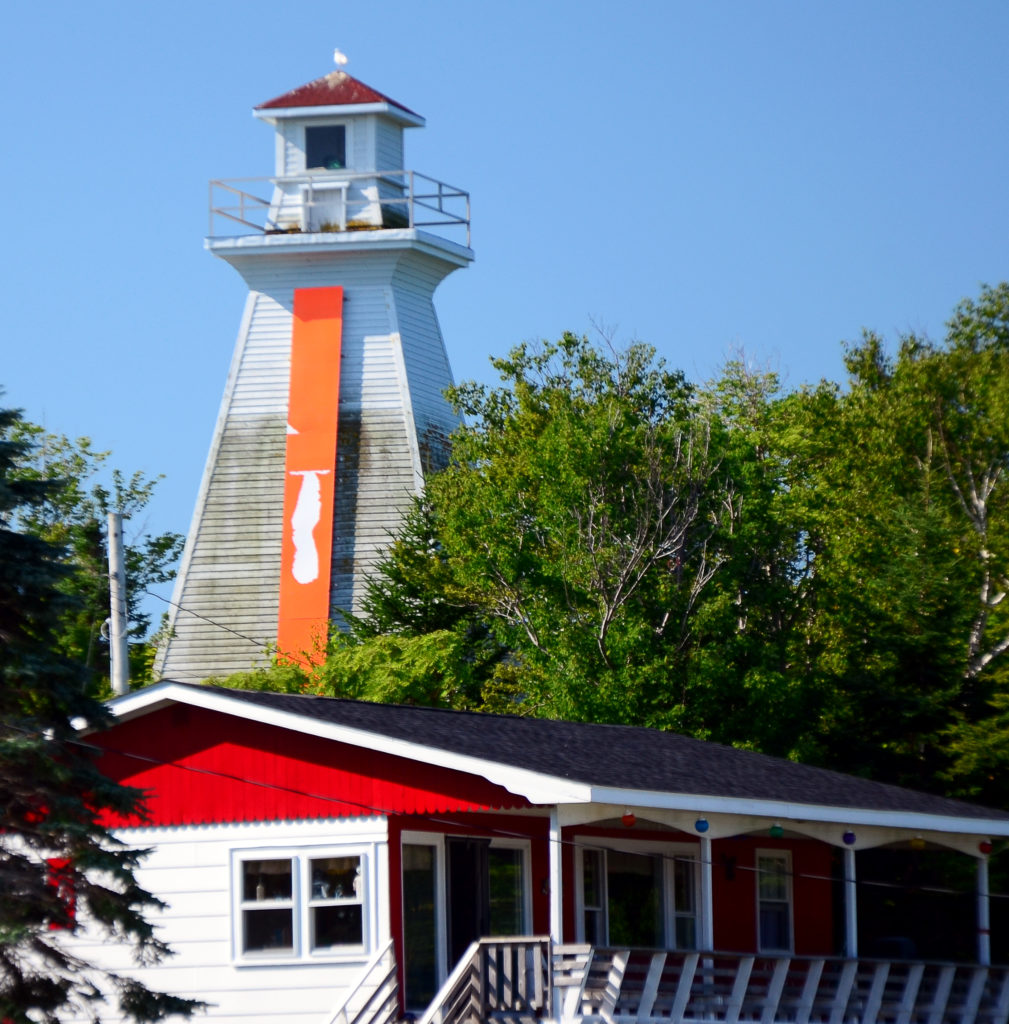
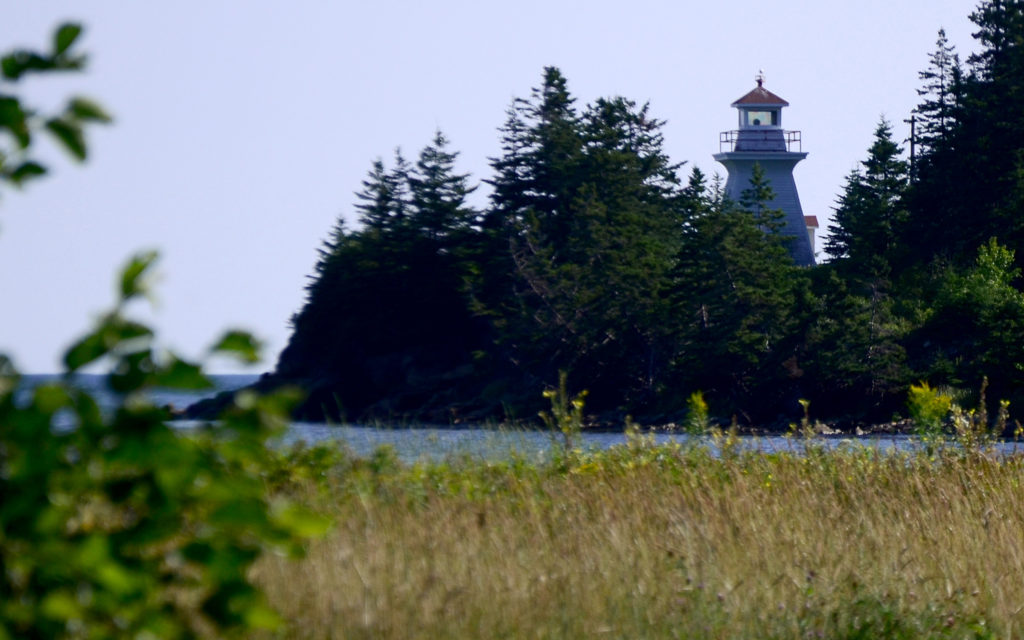
Great Bras D’Or Rear Range Light (L) and nearby Great Bras D’Or Front Range Light (R).
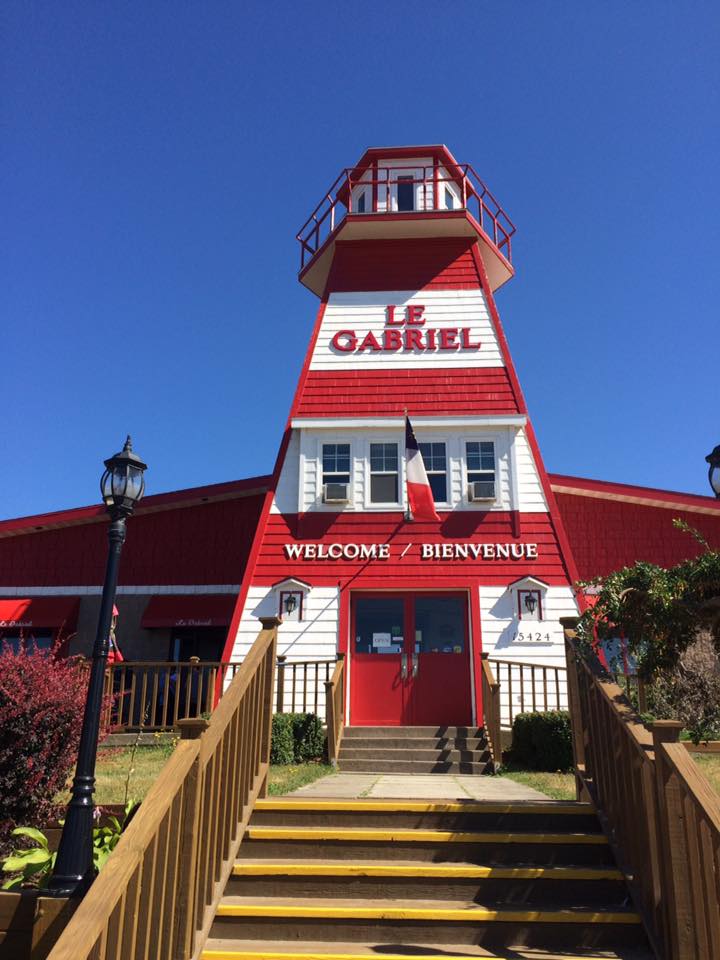
I had lunch at a lighthouse restaurant… Le Gabriel, on the Cabot Trail in Cheticamp, NS.
Highland Village Museum is a living history exhibit of Gaelic culture throughout their history in North America. There are five houses demonstrating the progression of building styles and lifestyles from the Scots’ arrival in the mid-1700s to the turn of the twentieth century. In addition, there are examples of other facilities commonly found in villages of the time like a school house, general store, forge, church, etc. All these are “inhabited” by costumed actors who are in character of the particular period.
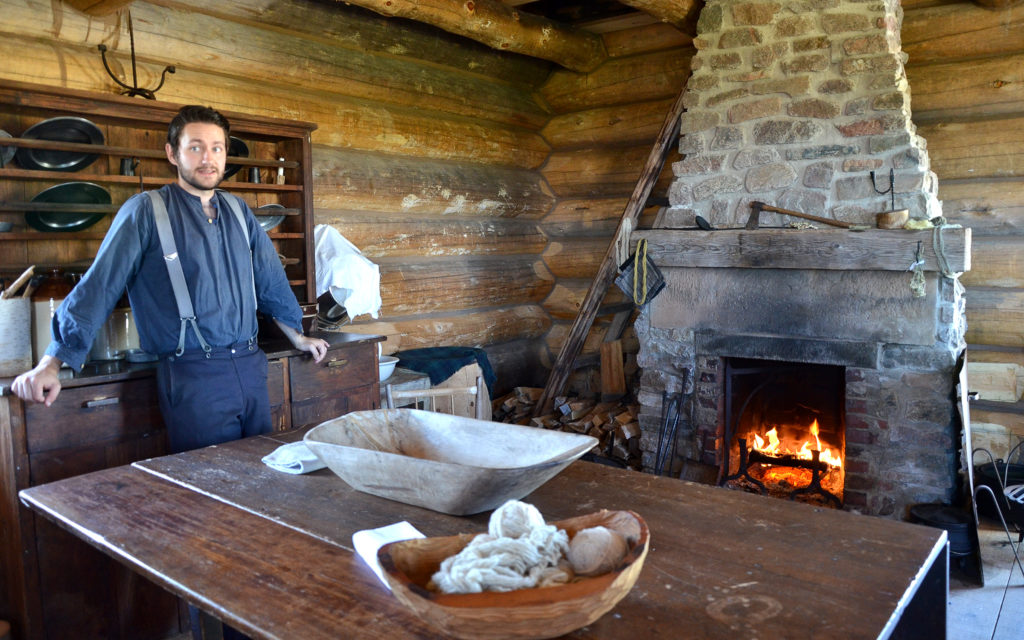


Many areas of Cape Breton have no cell phone service or internet connections. I was lucky to have a campsite next to the office so I was able to use their limited WiFi. Other campers would walk to the office and stand around outside with their smart phones. Phone calls were completely unavailable unless you drove to a location with service. Like most people in the area, I drove a mile down the road to park at the ferry crossing to access their cell service.
Speaking of ferries, I was puzzled by the prevalence of small car ferries to cross narrow bodies of water instead of building bridges. I saw the same thing on the north shore of the St. Lawrence River in Quebec but it was much more common here in Nova Scotia. During busy times, you could wait through several crossings before getting across and it costs $7 each way! When you take into consideration the diesel fuel and the labor of running ferries 24/7, it seems incredibly wasteful and bridges would be much more efficient.
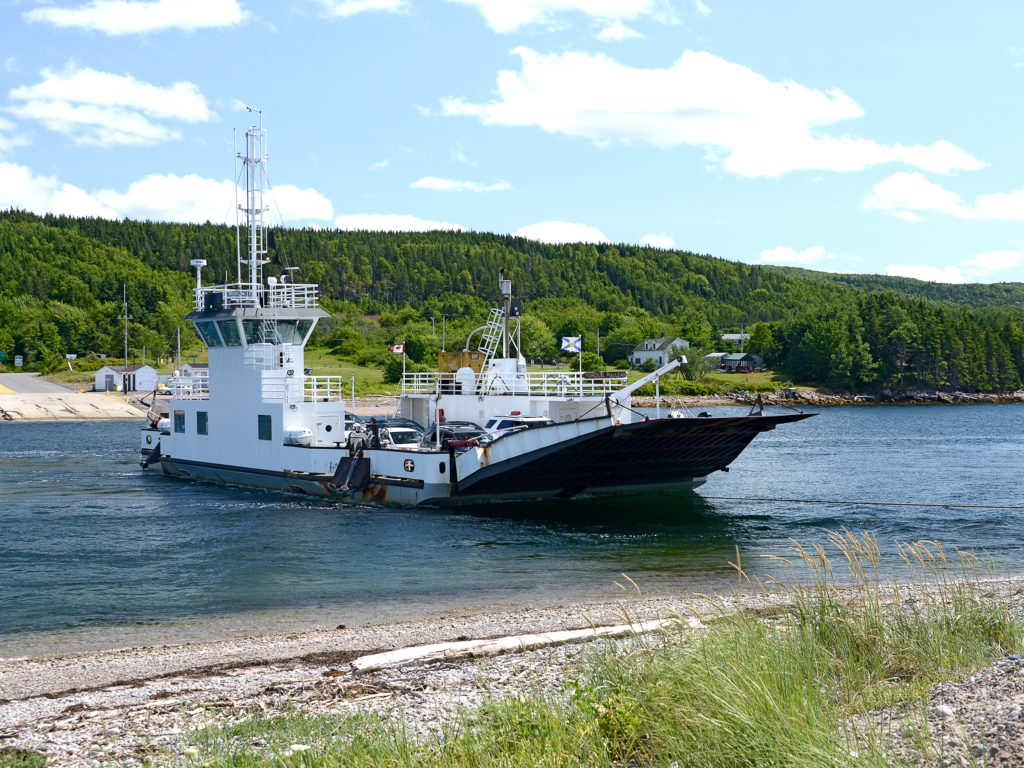
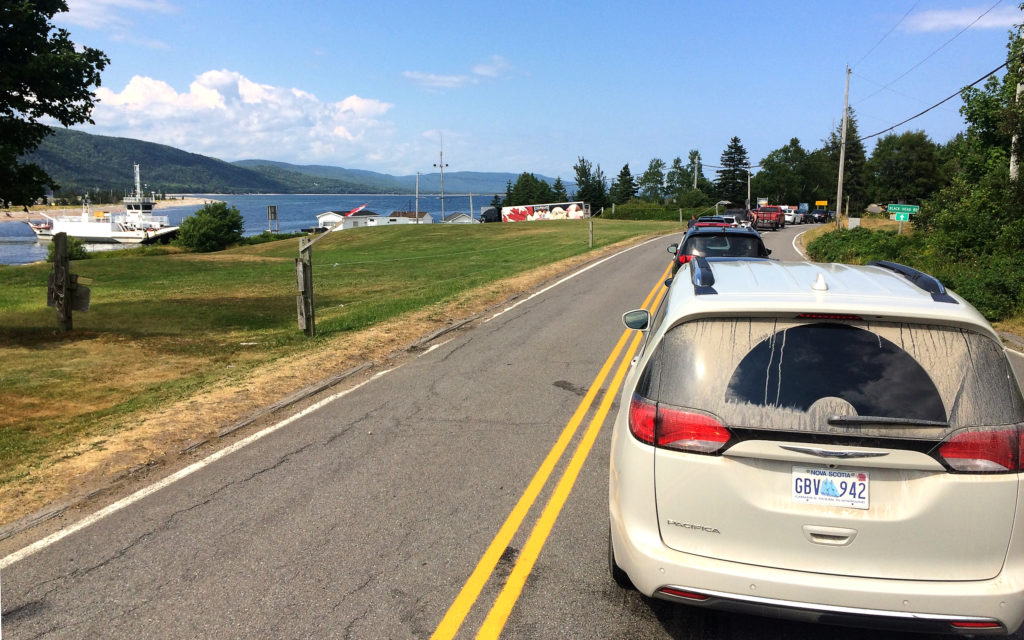
(L) Car ferry. (R) Line of cars waiting for ferry. It only holds about 10, depending on whether there are trucks, so it can take several crossings before you get to board.
I met a ferry captain one evening at the campground and asked him about it. His only response was that it would put a lot of people out of work. Still not a satisfying answer so I continue to wonder about the logic.
On Saturday nights at the campground, people gather around campfires and play guitars, accordions and sing a mix of popular music and traditional folk songs. Mix that with generous amounts of adult beverages and everyone has a great time. I invited myself to join one of these groups when I heard them playing a song I country line dance to. After dancing in my motorhome, I decided to go out and join the fun.
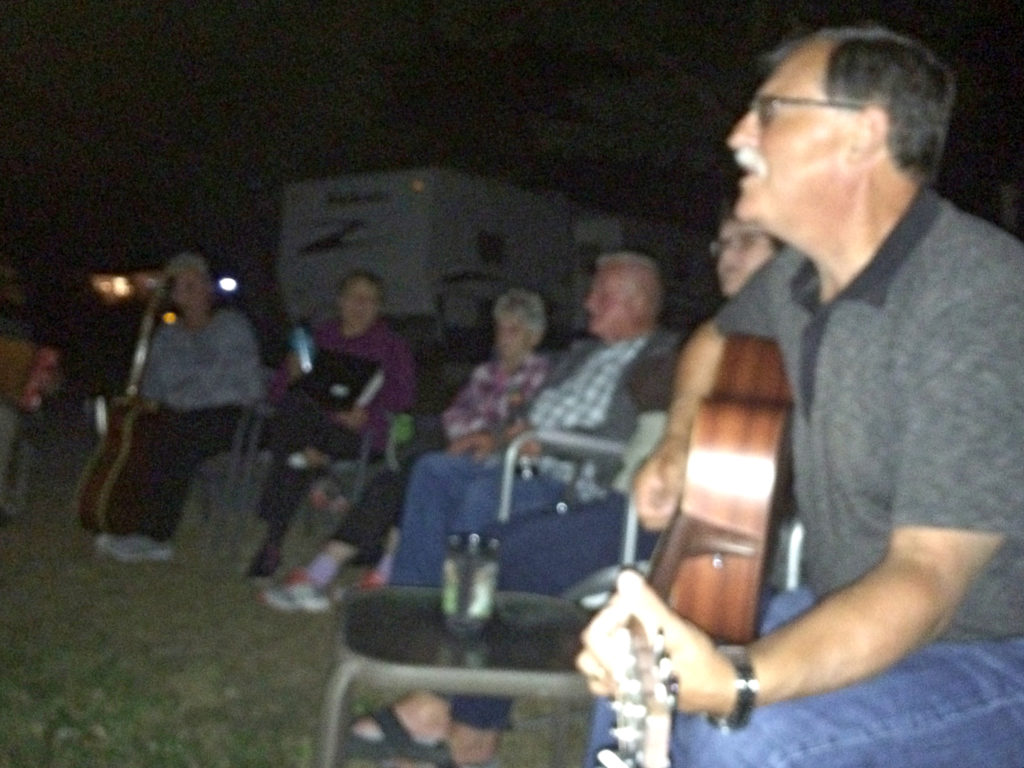
Saturday night sing-alongs around the campfires.
Upcoming post:
Nova Scotia Part 2.
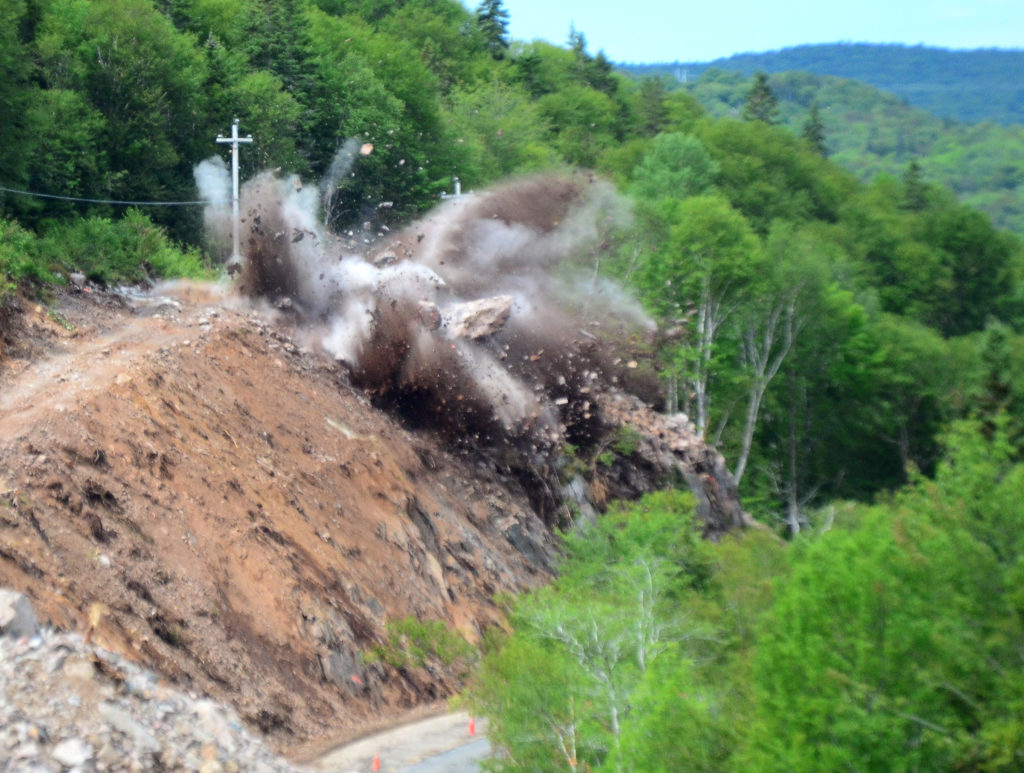

One thought on “Nova Scotia Part 1”
Hey Lindsay! I am going through your travels and absolutely loving it. We did the Cabot Trail many years ago, prefifth wheel. we drove and stayed at motels/hotels/cabins along the way. We stopped at Meat Cove and saw all kinds of tents and folks boondocking. Reading your blog makes me want to go back. I also want to do PEI, too.
Hope this finds you well….